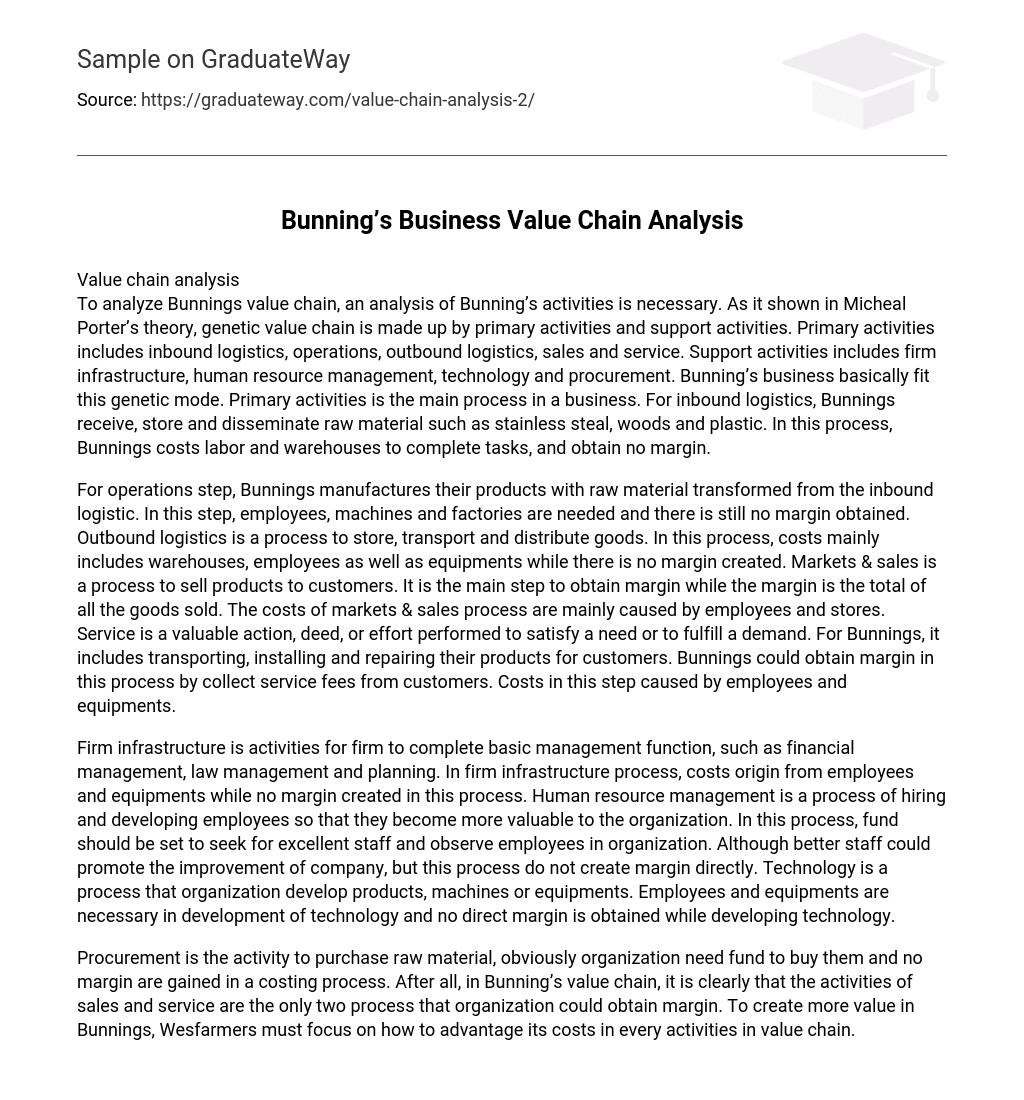Value chain analysis
To analyze Bunnings value chain, an analysis of Bunning’s activities is necessary. As it shown in Micheal Porter’s theory, genetic value chain is made up by primary activities and support activities. Primary activities includes inbound logistics, operations, outbound logistics, sales and service. Support activities includes firm infrastructure, human resource management, technology and procurement. Bunning’s business basically fit this genetic mode. Primary activities is the main process in a business. For inbound logistics, Bunnings receive, store and disseminate raw material such as stainless steal, woods and plastic. In this process, Bunnings costs labor and warehouses to complete tasks, and obtain no margin.
For operations step, Bunnings manufactures their products with raw material transformed from the inbound logistic. In this step, employees, machines and factories are needed and there is still no margin obtained. Outbound logistics is a process to store, transport and distribute goods. In this process, costs mainly includes warehouses, employees as well as equipments while there is no margin created. Markets & sales is a process to sell products to customers. It is the main step to obtain margin while the margin is the total of all the goods sold. The costs of markets & sales process are mainly caused by employees and stores. Service is a valuable action, deed, or effort performed to satisfy a need or to fulfill a demand. For Bunnings, it includes transporting, installing and repairing their products for customers. Bunnings could obtain margin in this process by collect service fees from customers. Costs in this step caused by employees and equipments.
Firm infrastructure is activities for firm to complete basic management function, such as financial management, law management and planning. In firm infrastructure process, costs origin from employees and equipments while no margin created in this process. Human resource management is a process of hiring and developing employees so that they become more valuable to the organization. In this process, fund should be set to seek for excellent staff and observe employees in organization. Although better staff could promote the improvement of company, but this process do not create margin directly. Technology is a process that organization develop products, machines or equipments. Employees and equipments are necessary in development of technology and no direct margin is obtained while developing technology.
Procurement is the activity to purchase raw material, obviously organization need fund to buy them and no margin are gained in a costing process. After all, in Bunning’s value chain, it is clearly that the activities of sales and service are the only two process that organization could obtain margin. To create more value in Bunnings, Wesfarmers must focus on how to advantage its costs in every activities in value chain.





